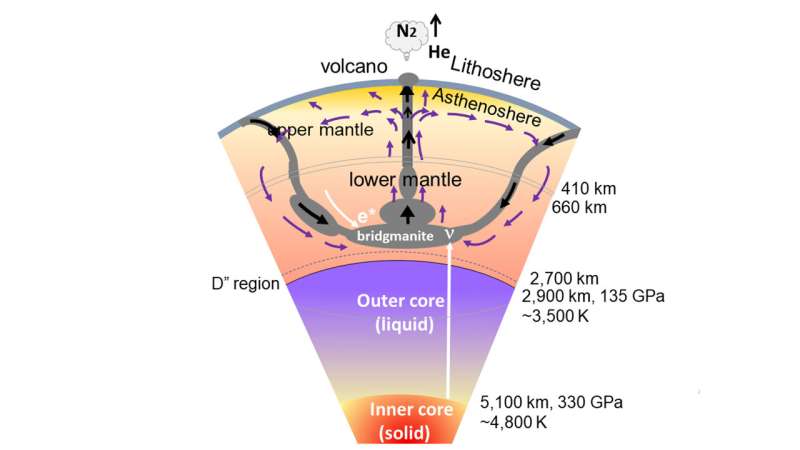Challenging the big bang puzzle of heavy elements

It has long been theorized that hydrogen, helium, and lithium were the only chemical elements in existence during the Big Bang when the universe formed, and that supernova explosions, stars exploding at the end of their lifetime, are responsible for transmuting these elements into heavier ones and distributing them throughout our universe.
Researchers in Japan and Canada are now challenging a piece of the Big Bang puzzle. Do all of the elements heavier than iron really originate from stars exploding, or are some created deep within the Earth's mantle, thanks to convection dynamics driven by plate tectonics?
In AIP Advances, the group proposes an alternative model for the formation of nitrogen, oxygen, and water based on the history of the Earth's atmosphere.
They postulate that the 25 elements with atomic numbers smaller than iron (26) were created via an endothermic nuclear transmutation of two nuclei, carbon and oxygen. These nuclei could be confined within the natural aragonite lattice core of the Earth's lower mantle at high temperatures and pressures during lithosphere subduction, which occurs when two tectonic plates converge.
The group describes the endothermic nuclear transformation process as being "aided by the physical catalysis of excited electrons generated by the stick-slipping movement of mineral compounds of geoneutrinos produced deep within the Earth's mantle by nuclear fusion of deuterons or radioactive decay of elements."
"Our study suggests that the Earth itself has been able to create lighter elements by nuclear transmutation," said Mikio Fukuhara, a co-author from Tohoku University's New Industry Creation Hatchery Center in Japan.
If accurate, this is a revolutionary discovery because "it was previously theorized that all of these elements were sourced from supernova explosions, whereas we postulate a supplementary theory," Fukuhara said.
This work will have a considerable impact on the field of geophysics and may, as a result, "indicate possible research directions for the potential to create the elements required for future space development," said Fukuhara.
More information: Mikio Fukuhara et al, Earth factories: Creation of the elements from nuclear transmutation in Earth's lower mantle, AIP Advances (2021). DOI: 10.1063/5.0061584
Journal information: AIP Advances
Provided by American Institute of Physics





















